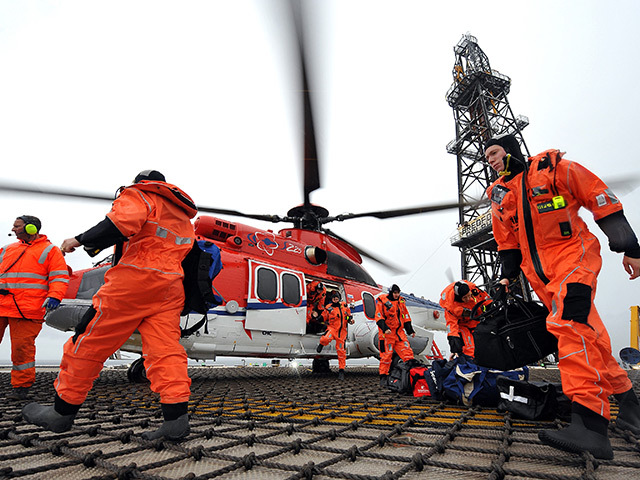
There is a “candidate shortage” for the increasing levels of work being seen in the North Sea with the oil price now beyond $100.
However it remains “very unlikely” that the industry will see a jobs resurgence to cover the thousands lost during the Covid-19 pandemic.
Commodity prices have been surging even before the invasion of Ukraine, going beyond $130 last week but since retreating to below $110.
It’s a stark contrast to Brent Crude’s low of less than $20 a barrel in 2020.
According to trade body Offshore Energies UK (OEUK), some 35,000 direct and indirect jobs in the North Sea energy sector were lost due to the Covid price shock.
Many in the industry opted for early retirement or to leave the sector altogether, resulting in recruitment woes now that prices and activity levels are up.
Amanda McCulloch, chief executive of recruitment firm TMM said: “We are starting to see peak levels of employment already and the challenge in the market is around candidate shortage which is resulting in a softer increase in recruitment activity than we would have anticipated.”
Hiring is back to pre-pandemic levels as outlooks improve, however major challenges remain, particularly amid Covid and Brexit, mean some candidates are being risk-averse.
She added: “The most recent downturn followed by the impact of the pandemic saw many people opting for early retirement or choosing to leave the industry entirely. Coupled with this, the reduction in graduate and apprentice intakes over recent years is also starting to bite.
“This is creating a competitive market both in permanent and temporary appointments, with increased demand and low supply driving salaries upwards.”
In 2022 and 2023, an “investment revival” is expected, according to petroleum economist Alex Kemp of Aberdeen University, as delayed projects from 2020 come through and more decommissioning work arises.
Nonetheless, even as activity levels resurge, the number of new roles directly created by oil and gas production will likely be “hundreds”, he said.
It is “very unlikely” that the oil and gas sector directly would see a resurgence in jobs figures similar to what was lost, particularly as older fields continue to decline in production towards end of life.
“The next two-three years should, in my view, see an uptick in investment in the North Sea,” he said. “Of course, along with it, there would be saving jobs. But we would be talking about hundreds
“Another economic effect is that government tax revenues will be significantly increased because of the very high prices.”
However, more broadly, the North Sea Transition Deal, signed in March last year, said 40,000 jobs could be supported and created by 2030, in areas including offshore wind, carbon capture storage (CCS) and hydrogen production.
OEUK said work is “still ongoing” to measure the jobs recovering to pre-Covid and price crash levels for the North Sea, and updated employment figures will be released in its workforce report later this year.
Last year, the group said the number of direct and indirect jobs supported by the industry is expected to have risen in 2021 to 118,400, albeit 33,700 fewer than pre-pandemic.
Professor Paul de Leeuw of the Robert Gordon University is working on a North-east of Scotland future energy workforce review, expected to be set out in May.
He said: “The first thing is securing the jobs we already have, it’s really important we keep producing which secures the jobs we currently have.
“The second thing is it makes things like the North Sea Transition Deal, the Offshore Wind sector deal, even more important than ever before.
“Thirdly, it will create more jobs if we start doing more investment. That then raises a whole host of questions around where you target your investment.”
Do you work in or with the energy sector? Or are you student studying towards a career in the industry? If so, take part in our short survey and have the chance to win £50 in a prize draw! Click here.
Recommended for you


 © Supplied by TMM Recruitment
© Supplied by TMM Recruitment © Supplied by University of Aberde
© Supplied by University of Aberde